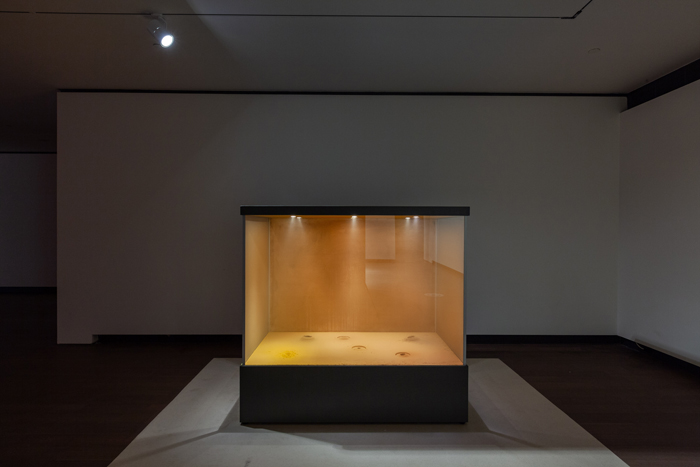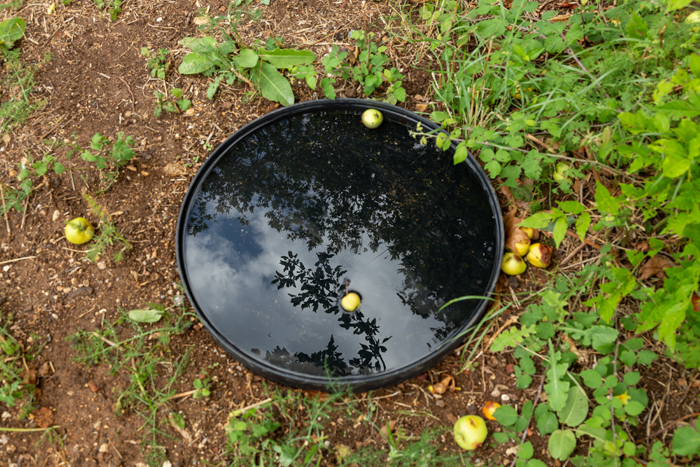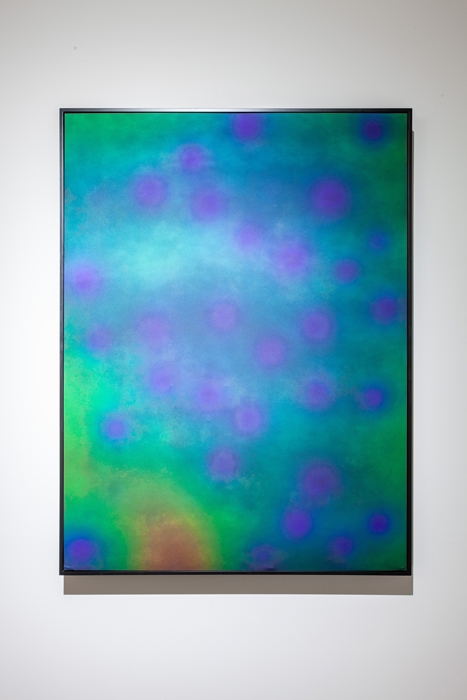You might think that the curator of a major international exhibition would shy away from comparisons with Werner Herzog’s Fitzcarraldo (1982), in which a European rubber baron works a cast of indigenous labourers to death in order to realise his dream of an opera house in the Amazon. Particularly when the exhibition takes for its subject the ecological catastrophe set in motion by the exploitation of natural resources and proposes that we should look beyond the systems of knowledge enshrined in canonical Western art. So eyebrows were raised when Nicolas Bourriaud, speaking at the opening of the 16th Istanbul Biennial, chose a film famous for the catalogue of disasters that dogged its shoot as analogy for his experience of putting the show together.
Beyond its focus on capitalism’s impact on the environment (the titular ‘seventh continent’ describes the vast island of discarded plastic floating around in the Pacific), the biennial’s most obvious parallel to a story about hauling a steamship over a mountain is the last-minute relocation of more than 40 projects from a site in the Istanbul Shipyards that was found to be riddled with asbestos. The replacement is a waterfront warehouse in the final stages of its transformation into the Istanbul Museum of Painting and Sculpture, a maze of steel walkways and purposefully sterile spaces in the institutional style. The impacts of this chaotic resettlement are not immediately apparent, as visitors are welcomed into the exhibition by Dora Budor’s minimalist installation of three standing glass chambers clouded by different shades of prettily coloured fog. Closer inspection of the interior of Origin III (Snow Storm) (2019) reveals small geysers that intermittently puff out tinted dust particles into its sealed atmosphere, the eruptions of which are determined (according to a wall text) by noise from neighbouring construction works.

The work successfully dramatises ideas that the visitor might expect to become motifs of an exhibition addressed to art in the Anthropocene: the aestheticisation of climate change (the colours allude to the skies painted by J.M.W. Turner, their dramatic hues later attributed to atmospheric pollution); the transgression of boundaries separating art from the world, which is to say nature from culture; the partial surrender of authorship to environmental factors beyond the artist’s control. And yet this promising start, indebted in formal and conceptual terms to the ever-more influential work of Pierre Huyghe, is not followed up. Moving through the building, the visitor encounters different ways of encoding a disorderly world in art – among them Agnieszka Kurant’s Conversions (2019), an LCD screen-painting that likewise outsources its compositional intelligence and calls to mind (although it suffers by the comparison) Gustav Metzger’s Liquid Crystal Environment (1965) – but the overwhelming impression is of branching paths that soon peter out.
Reorganising the show to fit a different architecture at such short notice is bound to upset any curatorial scheme, but the intellectual framework for the exhibition is so broadly defined (‘a relational anthropology,’ says Bourriaud, ‘which endeavours to account for all of the existing modes of thought or life’) as to be unaccountable. There is little sense of the coordination of ideas into a coherent proposition, even a ‘relational’ one, though interesting themes emerge in isolation. Take for an example the patchwork monster at the centre of Eva Koťátková’s Machine for Restoring Empathy (2019), a room-size installation and functioning sewing workshop, which could be read as suggesting that recycling unsettles the fixed identities on which a consumerist society depends. Which is to say that if you can get used to the idea that materials can serve different purposes – can be rehabilitated and reincorporated into new things – then you are less likely to see the world as a collection of discrete objects, organisms and people with a finite shelf-life, like all those single-use bottles clogging up the ocean.

The transfer of materials and energies is also a subject of Jonathas De Andrade’s O Peixe (2016), which films Amazonian fishermen at their work. Each of these vignettes concludes with a bare-chested man clutching a fish to his chest, seeming to comfort the animal through its passage into the next life (and, one presumes, his belly). The impulse to well up over this interspecies empathy is tempered by the lurking suspicion that the artist is playing with the liberal pieties of his audience, but the film suggests a way of life that does not privilege the individual human subject even as it parodies the artworld’s tendency to fetishise anything resembling ‘authentic indigeneity’. Elsewhere, the inclusion of artists such as Suzanne Husky – whose New Age-y film Earth Cycle Trance (or Tree Cycle) (2019) follows a witch, priestess and sacred earth activist named Starhawk – feels like a gesture towards non-Enlightenment traditions of thought to which the show as a whole does not subscribe.
Indeed, it can be argued that the anthropocentrism rejected by Husky finds its highest expression in the designation of our geological era as the Anthropocene, a word sprinkled liberally through the exhibition literature. The transdisciplinary Feral Atlas Collective draws attention – through case studies into the environmental effects of major infrastructural projects – to some of the controversies surrounding the artworld’s latest pet term. A three-part installation of videos, poems and reports demonstrates how the notion that humanity has unilaterally shaped the biosphere implies the possibility of control over it, and how misleading is the assumption that humans could ever be the guardians (and by extension masters) of nature. That delusion was contradicted at the dawn of the Industrial Era by the Romantic experience of the natural world, a state which Deniz Aktaş’s monumental drawings (such as Independent Variable, 2018) flips on its head. A vast heap of tyres suggests something like an artificial sublime in which nature, in an inversion of the landscapes of Turner or Caspar David Friedrich, is overwhelmed by humanity.
Yet talk of undermining the division of nature and culture led me to expect an exhibition that did more in its staging to upset conventions of inside and outside, for all that individual works by Suzanne Treister and Korakrit Arunanondchai challenge the separations of self and other. It is perhaps revealing that the symbol chosen for ecological crisis is the distant ‘seventh continent’ – which most of us will never glimpse – rather than the credit card of plastic that each of us now ingests every week, with who knows what consequences. An exception to the lingering feeling that the art was on the whole too thoroughly insulated from the world, tucked away safely in institutional spaces, was provided by Hale Tenger’s Appearance (2019), the pick of several works stationed on Büyükada Island in the Sea of Marmara. Set in the grounds of a prettily ruined palace, this sound installation featuring a poem by the artist was complemented by mirrored obsidian sculptures dotted around a scruffy garden. I can’t speak for the poem, but the artist’s provision of a space in which to reflect on the creative potential of overgrowth, decay and nonintervention was welcome.

There has recently been a tendency in the artworld, apparent in the SF craze of recent years, to confuse alternative ways of thinking with the creation of fictional realities. Visitors to the Pera Museum, the biennial’s third and final venue, will have an abundance of time to reflect on this. Again the presentation starts promisingly: a large part of the third floor is occupied by a display of artefacts from the LIhuroscian civilisation dreamed up by Norman Daly and preserved in devotional objects that closely resemble mid-twentieth-century hand tools (such as the Icon of Shoor-noo from the Temple of Phallus at Draikum, a wood clamp dated to the civilisation’s ‘middle period’), alongside witty assemblages, catalogue entries, poems and quasi-archaic marble carvings. The appeal of the fantasy world created by Daly, who was from 1942 to 1999 a teacher at Cornell University, is that it does not seem designed to carry any allegorical weight beyond its own witty internal logic. The consequence is that it’s possible, counterintuitively, to invest it with all kinds of speculative significances that seem pertinent to the biennial’s theme: it is revealing of the human compulsion to build worlds; plays on the relationship between object and its framing narrative; and pokes fun at the conventions of anthropology and the designation of non-Western cultural products as artefacts rather than art. By comparison, the dystopian island society imagined by Charles Avery’s superficially similar The Islanders (2004–) feels more like a vehicle through which to deliver a message. As one walks through the museum’s three floors, an apparently endless series of works (including Paul Sietsema’s trompe l’oeil films and the paintings of Piotr Uklański) seem designed to lure the viewer into misreading the presented information, only to then ‘surprise’ them with the unexpected news that knowledge is fallible and history is fabricated.
My frustration at being so repeatedly beaten over the head was exacerbated by reacquaintance (as part of a group exhibition at Arter, not part of the biennial) with Jonas Mekas’s short film Reminiszenzen aus Deutschland (Recollections of Germany, 1971/1993, edited 2012). This account of the Lithuanian filmmaker’s wartime incarceration in German labour camps offered a reminder of how it is possible formally to communicate the ways in which history is constructed – through montage, stills and voiceover, in Mekas’s case – without compromising the truth. I was left with the question of what it means – in a city where artists and journalists who draw attention to inconvenient historical truths risk imprisonment – for this exhibition to focus instead on alternative realities or, as they have elsewhere been called, facts. It’s hard to escape the feeling that a comparable suspicion of scientific authority underpins denial of the climate disaster that the biennial affects to protest, and further to wonder about precisely how much carbon and plastic was produced in the process of making it. This isn’t blithely to pass judgment on what is a complex argument, but rather to propose that an exhibition that recognises the ‘end of the separation between nature and culture’ could foreground its own implication in the problems it identifies.
16th Istanbul Biennial, The Seventh Continent at various venues, Istanbul, through 10 November
From the October 2019 issue of ArtReview
